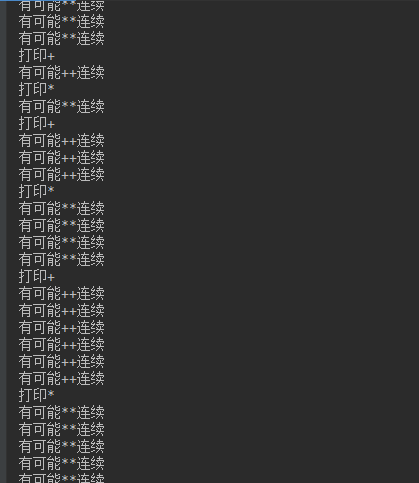Java多线程-Lock的使用(1)
ReentrantLock类
在JDK1.5中,新增了 ReentrantLock,相比 synchronized 在扩展功能上更加强大,比如具有嗅探锁定、多路分支通知等功能。
示例:
public class Test { public static void main(String[] args) { MyService service = new MyService(); new Thread(() -> service.methodA()).start(); new Thread(() -> service.methodB()).start(); } static class MyService { private Lock lock = new ReentrantLock(); public void methodA() { lock.lock(); try { System.out.println("methodA begin ThreadName = " + Thread.currentThread().getName() + " time = " + System.currentTimeMillis()); Thread.sleep(5000); System.out.println("methodA end ThreadName = " + Thread.currentThread().getName() + " time = " + System.currentTimeMillis()); } catch (Exception e) { e.printStackTrace(); } finally { lock.unlock(); } } public void methodB() { lock.lock(); try { System.out.println("methodB begin ThreadName = " + Thread.currentThread().getName() + " time = " + System.currentTimeMillis()); Thread.sleep(5000); System.out.println("methodB end ThreadName = " + Thread.currentThread().getName() + " time = " + System.currentTimeMillis()); } catch (InterruptedException e) { e.printStackTrace(); } finally { lock.unlock(); } } } }
运行结果如图:

使用Condition 实现等待/通知
public class ConditionTest { public static void main(String[] args) throws InterruptedException { Service service = new Service(); new Thread(() -> service.await()).start(); Thread.sleep(3000); service.signal(); } static class Service { private Lock lock = new ReentrantLock(); private Condition condition = lock.newCondition(); public void await() { lock.lock(); try { System.out.println("begin await 时间为" + System.currentTimeMillis()); condition.await(); System.out.println("end await 时间为" + System.currentTimeMillis()); } catch (InterruptedException e) { e.printStackTrace(); } finally { lock.unlock(); } } public void signal() { lock.lock(); try { System.out.println("begin signal 时间为" + System.currentTimeMillis()); condition.signal(); System.out.println("end signal 时间为" + System.currentTimeMillis()); } finally { lock.unlock(); } } } }
运行结果如图:

使用Condition实现多对多生产者/消费者模式
public class Test { public static void main(String[] args) { Service service = new Service(); for (int i = 0; i < 10; i++) { new Thread(() -> { for (int j = 0; j < Integer.MAX_VALUE; j++) { service.set(); } }).start(); new Thread(() -> { for (int j = 0; j < Integer.MAX_VALUE; j++) { service.get(); } }).start(); } } static class Service { private Lock lock = new ReentrantLock(); private Condition condition = lock.newCondition(); private boolean hasValue = false; public void set() { lock.lock(); try { while (hasValue == true) { System.out.println("有可能++连续"); condition.await(); } System.out.println("打印+"); hasValue = true; condition.signalAll(); } catch (InterruptedException e) { e.printStackTrace(); } finally { lock.unlock(); } } public void get() { lock.lock(); try { while (hasValue == false) { System.out.println("有可能**连续"); condition.await(); } System.out.println("打印*"); hasValue = false; condition.signalAll(); } catch (InterruptedException e) { e.printStackTrace(); } finally { lock.unlock(); } } } }
运行结果如图:


